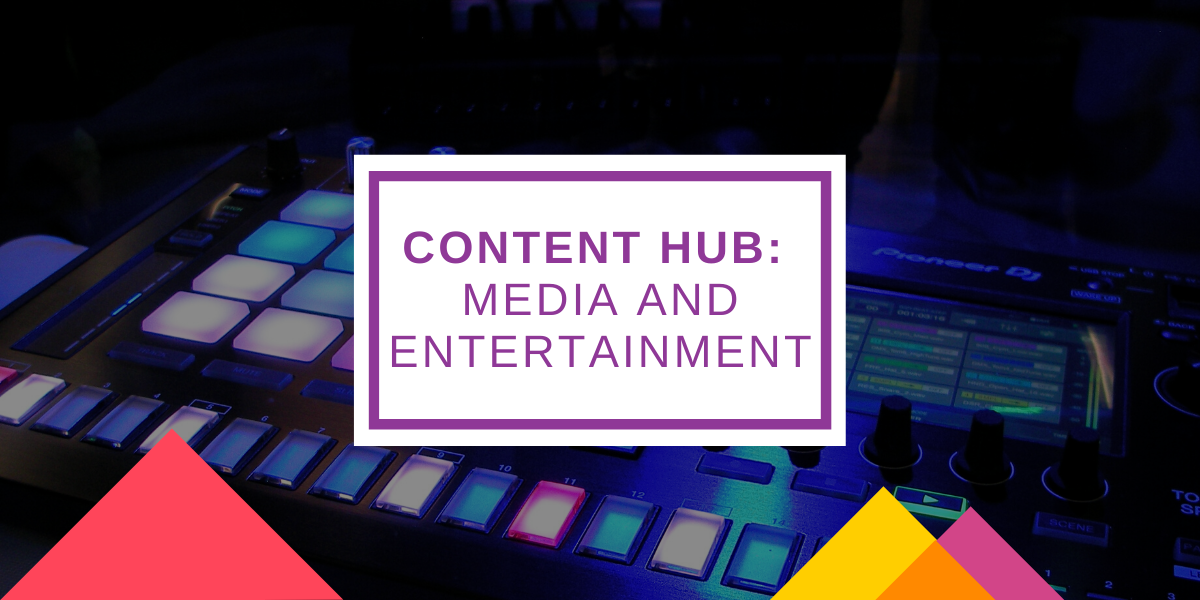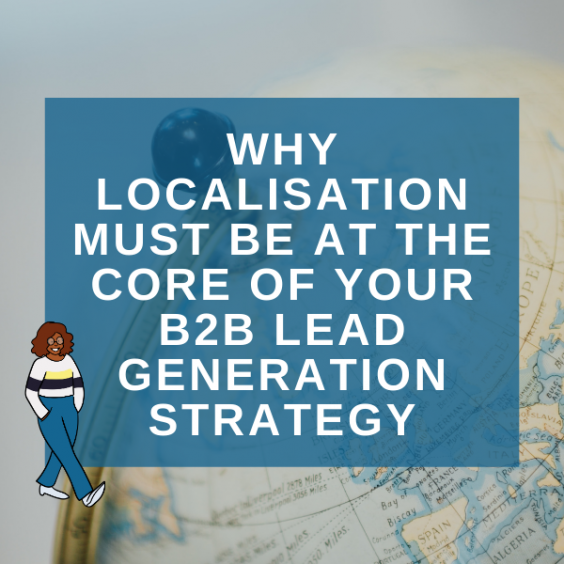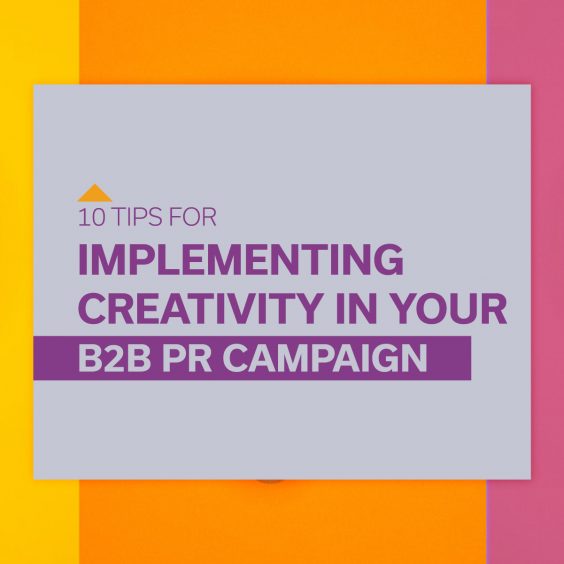The media and entertainment industry (M&E) has always been a fast-moving one, but never has this been the case more than right now. The industry is going through a period of exciting change, with new technologies driving innovation and growth opportunities. However, this also presents plenty of challenges, particularly from a PR perspective. That’s why we’ve put together this 101 guide full of advice and insight into media and entertainment PR.
- Fournisseurs de technologies de l’audiovisuel : avez-vous récemment réévalué votre positionnement sur le marché?
- How to make the most of your IBC 2024 show comms
- How to get ahead for IBC2024
- How to engage your audience in the themed entertainment space
- A change is as good as a rest: embracing the new media and entertainment landscape
- It takes two: five steps to amplifying your M&E brand partnership
Fournisseurs de technologies de l’audiovisuel : avez-vous récemment réévalué votre positionnement sur le marché?
Au cours des dernières années, la technologie audiovisuelle est devenue plus accessible et, par conséquent, elle s’est déployée comme elle ne l’a jamais été.
Les caméras professionnelles, les chaînes de production et la technologie back-end ne sont plus limitées aux diffuseurs TV, une multitude de grandes marques les utilisent désormais en interne pour créer du contenu et des supports vidéo pour le marketing. Les projecteurs, écrans et affichages HD vont au-delà des lieux de divertissement, ils sont dorénavant présents dans les points de vente, les parcs à thème et autres lieux qui proposent du divertissement basé sur la localisation (LBE). La modélisation 3D et les pipelines AR / VR sont, bien sûr, déployés dans l’architecture et la conception de produits autant que dans les VFX ou la post-production.
Bien que ce soit le cas depuis plusieurs années (et que cela continuera à l’être), il est encore assez courant de voir les fournisseurs de ces technologies s’en tenir à leur ancien positionnement sur le marché et ne pas adapter leur messaging aux nouvelles audiences. C’est regrettable pour les équipes de marketing et de vente, qui sont obligées d’utiliser du contenu ou de la matière conçus pour le marché de la production ou de la distribution de médias professionnels, et non pour leur base d’acheteurs réelle.
En tant qu’agence de marketing intégrée, nous en parlons souvent à nos clients. J’ai donc pensé à vous donner un bref aperçu de la façon dont vous pouvez améliorer votre positionnement sur le marché.
Montrez que vous connaissez leur marché
Dans les ventes B2B, les acheteurs accordent beaucoup d’importance au fait de s’adresser à un vendeur ou à un prestataire de services en qui ils peuvent avoir confiance. Bien que le processus de vente B2B n’ait pas été perturbé de la même manière que celui des consommateurs ces dernières années, le pouvoir d’achat est toujours détenu par des générations qui s’attendent à pouvoir faire confiance aux vendeurs avec lesquels elles font affaire.
Si vous ne pouvez pas démontrer que vous connaissez le marché de vos acheteurs, il sera inévitablement plus difficile pour eux de vous accorder leur confiance. En vous positionnant différemment sur tous les marchés où vous souhaitez vendre, vous pouvez montrer que vous vous intéressez à leurs besoins spécifiques plutôt que de simplement vouloir vendre.
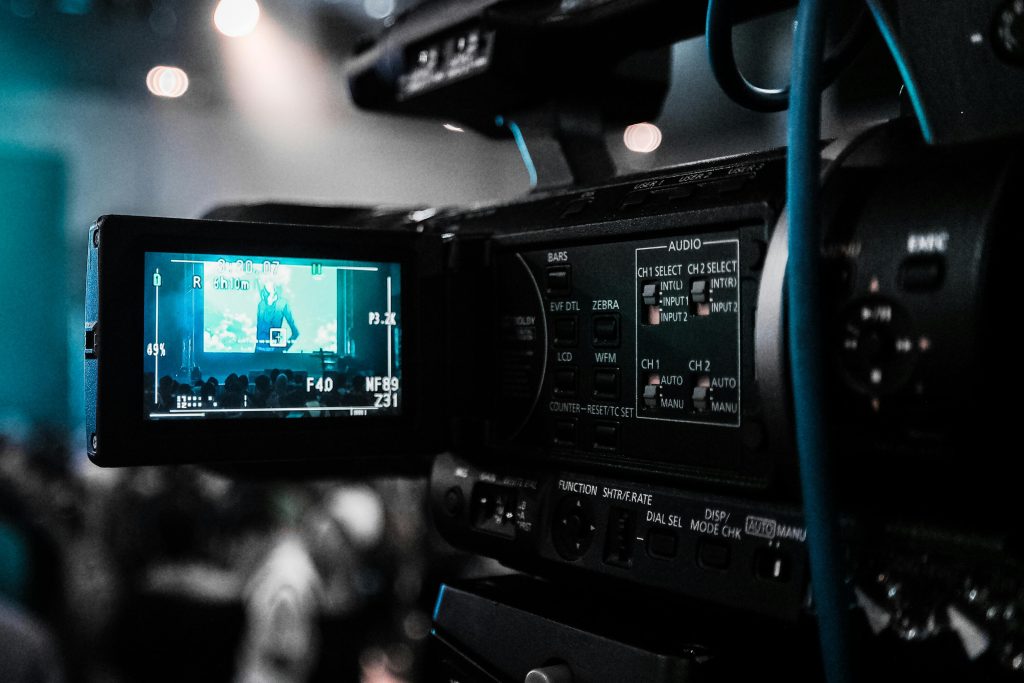
Reconnaître les différents défis de vos clients
Les défis auxquels votre technologie ou vos services répondent ne se transposent pas toujours d’un secteur à l’autre. C’est pourquoi il est essentiel de veiller à établir un plan d’action, en adaptant votre positionnement pour refléter les besoins des différents marchés cibles. Sinon, vous risquez de mettre en avant les mauvais arguments de vente et de ne pas attirer les acheteurs potentiels.
Dans le domaine de la radiodiffusion, par exemple, la rapidité et l’efficacité de votre technologie seront les principaux arguments de vente. Mais si cette même technologie est déjà utilisée par de grandes marques, il est probable que votre public cible recherchera une interface utilisateur plus facile à manipuler, susceptible de simplifier la formation pour les personnes n’ayant pas d’expérience dans le domaine des médias.
Adaptez votre utilisation de la langue
Maintenant que vous avez identifié les défis les plus urgents que votre technologie aide vos clients potentiels à relever, l’étape suivante consiste à y faire référence de la bonne manière.
Le langage utilisé pour décrire les technologies, les services et l’USP (Unique Selling Proposition) est un autre élément sous-estimé du positionnement des fournisseurs sur le marché. Si vous vendez à des salles de spectacles un jour et à un studio de médias le lendemain, certains termes et expressions ne passeront tout simplement pas de l’un à l’autre. Pour vous assurer que votre message commercial trouve un écho auprès de chaque public cible, il est important que vos documents de positionnement commercial décrivent ces différences clés. Ainsi, votre équipe de vente sera armée et prête à approcher les prospects avec ce dont ils ont besoin pour entrer dans le marché.
Ce qu’il faut en retenir?
Même si la création d’un nouveau positionnement sur le marché n’est peut-être pas considérée comme l’une de vos principales priorités, ce simple changement aura certainement un impact considérable. Il sera rapidement rentabilisé, car votre équipe sera orientée vers la bonne direction pour ses plans de mise sur le marché.
Peut-être avez-vous pénétré un marché mais n’avez-vous pas obtenu les résultats escomptés, ou bien voyez-vous émerger des opportunités dans de nouveaux secteurs d’activité ?Dans un cas comme dans l’autre, il est absolument essentiel d’être correctement positionné. C’est ce que nos équipes font jour après jour pour aider les clients à analyser les marchés sur lesquels ils souhaitent attirer des acheteurs et les aider à façonner leur histoire de la bonne manière.
En clair, si vous n’agissez pas maintenant, vous risquez de faire une croix sur les ventes. Faites attention à ne pas payer le prix fort.
Etes-vous prêts à rafraîchir votre messaging sur le marché ? Discutons-en.
How to make the most of your IBC 2024 show comms
When it comes to IBC, what happens in Amsterdam most certainly doesn’t stay there. Our head of mediatech, Martin Izzard, is here to share some tips for communicating purposefully and maximising your impact at the show.
As marketers, the run-up to a major trade show like IBC can be hectic. From managing stand design and marketing collateral to sponsorship activities and events, there’s a seemingly never-ending list of things to do…
In the melee of deadlines and decisions, it’s easy for comms to take a back seat. That is until – right before the show starts – someone asks whether you’ve set up some meetings with journalists or entered an award (shoulda, woulda, coulda, right?).
With that in mind, we wanted to share some tips to help. After all, you’ve already shelled out thousands for your stand, travel and new business activities at the show, so why not go the extra mile to maximise your comms impact?
Use trade and industry publications
In media technology, we’re lucky that trade publications are still widely read and respected. This means they can have a real impact on your brand awareness. But this isn’t something to take for granted. With journalists spread increasingly thin, you need to take the time to engage with the media and tell your story.
As well as news and editorial ideas, we advise all our partners and clients to include at least some advertising or sponsorship spend in their exhibition budget. Ultimately, we need to support the publications we value to ensure the media landscape continues to thrive.
Third-party endorsement
Particularly at trade shows, comms can become a bit of a chest-beating exercise – whether that’s in how you speak about products or profile the people in your organisation.
However, the greatest impact doesn’t come from how often (or how loudly) you talk about yourself, but from third-party endorsement. The best way to get this at a show like IBC is by involving your customers, whether through a partnership announcement, joint media briefings, case study presentations, or even co-branded social media content.
Remember, customers and partners are valuable influencers for your business.
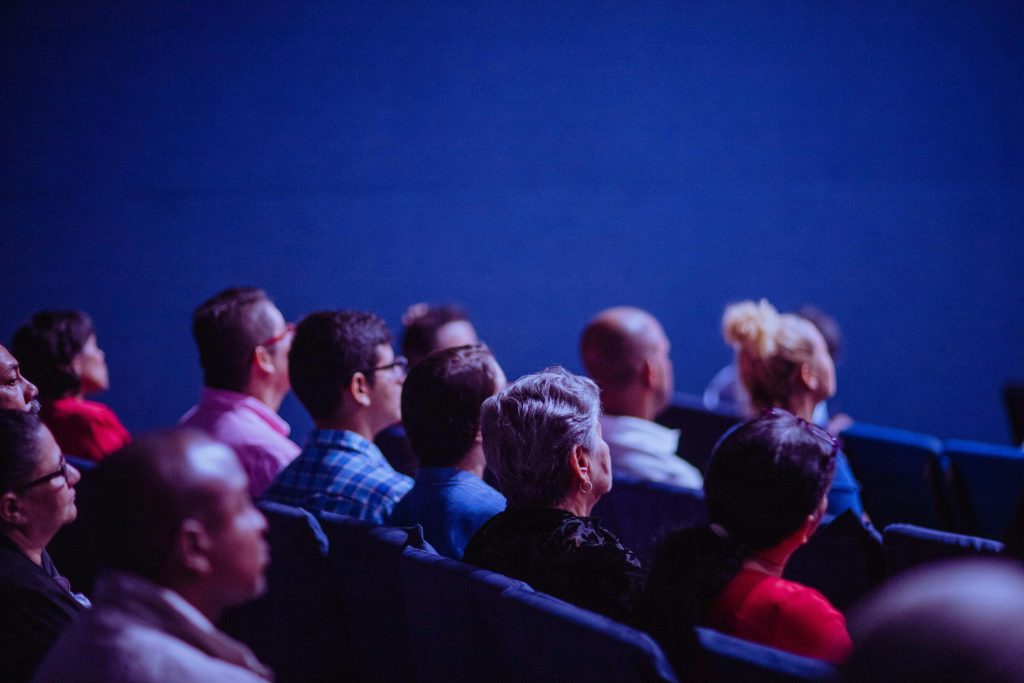
Don’t sell products – tell a story
It’s easy to think of a trade show like IBC as somewhere to showcase products in the hope the right prospect comes along. But with halls full of other exhibitors, you may find yourself getting lost in a sea of other solutions on display.
You’ll be pleased to know that the answer isn’t simply to invest in a bigger and brighter stand. Instead, a great way to stand out is by crafting a story that resonates with prospects. One that uses emotion (and even a dose of humour) to demonstrate that you understand their problems or to inspire them to think bigger and bolder.
We always tell clients that new product announcements and solution displays shouldn’t be about the buttons and the switches, but the benefits. By telling a story, you can better explain how your products help customers and improve their day-to-day operations and bottom line.
Another top tip: when crafting your ‘story’, it can be tempting to throw the kitchen sink at it. But simplicity and consistency are key to cutting through the noise (read: most of the time, no one wants to hear about your founding in 1991 and every company milestone since then). Your story should be your theme for the show and visible in everything, from your stand design to how your salespeople speak to visitors.
Get show ready
So far, so good. But how on earth are you going to get this all done before September? Maybe we can take something off your plate. The mediatech team at the lorries understands IBC inside out. We know who you’ll want to meet with, how to look after social media at the show, and how best to share news and customer stories.
So, if this is something we can help you with, get in touch. We have some specific show comms packages to make it quick and easy to maximise your presence at IBC.
See you in Amsterdam.
How to get ahead for IBC2024
During our time attending IBC, the leading broadcast media technology show in Europe, we’ve learned a thing or two. While the broadcast media industry has evolved, so has the landscape for PR and comms. It’s no longer about just trying to make a huge splash with demos on the show floor. You need to support your physical show comms by finding the right platform with which you can connect with your prospects and potential customers.
Because we’ve got this well of knowledge, we wanted to share a few tips that will help you get ahead for IBC2024.
What’s your story?
Ahead of the show, don’t think of your trade show presence simply as a series of demos. Decide what element of your brand story you’re trying to tell. Think about how you want to position your products to the potential customers that might be walking by.
Outlining what your story is for a show like IBC can be really effective. It should be visible in your signage and press communications, be a part of how you speak about your company in sales meetings or as part of your social media activity around the show.
And make sure to brief what that positioning is to your teams so they can integrate it into their conversations with customers for joined-up and thought-out show comms.
Don’t just do it because you always have
‘If it ain’t broke don’t fix it’ is the worst approach you can have in any communications. This is especially true for a trade show which is always a big investment, regardless of how you approach it.
And what the last few years have shown us is that trade shows have needed to evolve to address an industry that’s experienced many changes since pre-2020. Whether it’s speaking to people who have a bigger focus on remote working and managing a distributed workforce or integrating more digital platforms into your comms, the Einstein adage of the definition of insanity has never been more true than it is in 2024.
Think objectively about what you’re planning on doing. And don’t just plan in activity because it’s always been the way you’ve done things. Because you might be missing something key that’s going to have a huge impact.
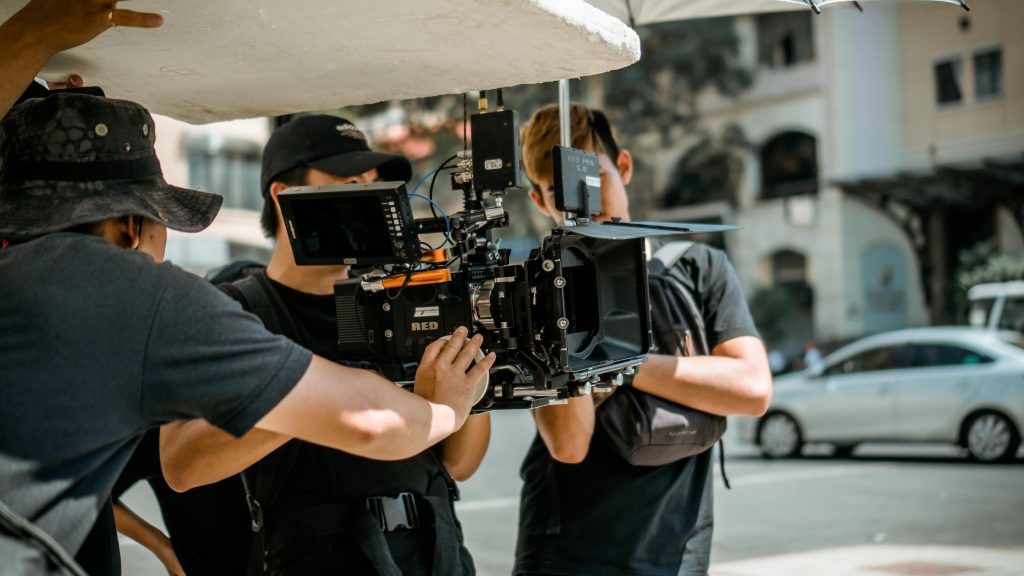
Think about what will deliver the most value
This last point is somewhat linked to all of the other tips we’ve shared above. And it’s all about value. As an agency, our primary goal is to provide value to our clients and our partners. We should be delivering results for them that are actually impacting the business.
And the same needs to be said for all your show plans. If the activity you were planning on doing isn’t a value-add then you ask if it’s really necessary. And if it isn’t, then is that what you need to be spending your time on?
And stick to it
When you’ve made those decisions, it’s really easy to be drawn back to doing something because someone has spotted that a competitor is doing something else. But if you’ve made your plans on sound logic; stick to your guns.
Your story, your press activity and your value-add activity is what will deliver a successful comms campaign around a show like IBC2024.
If you’re exhibiting at the show and you need support with any or all of the above, give us a call. In our 20 years at the show, not only do we know our way around the show itself but also around the opportunities available to exhibitors.
The lorries can help you define your story, build out a plan of activity, set up meetings with key industry journalists and support you on the show floor.
Just get in touch, we’d love to talk to you about how we can help.
How to engage your audience in the themed entertainment space
Media and entertainment stretches much further than the movies you go to see at the cinema, or the shows you watch from your sofaplex. Over the last few years, immersive/themed entertainment has become more and more popular – from the latest attractions at the biggest theme parks, to independently-run immersive theatres and everything in between.
The technology behind these entertainment experiences is always interesting to the entertainment junkies here at the lorries. Not only do they have to walk the line between innovation and creativity, but most importantly, they need to go completely unseen in order to maintain a themed location’s illusion or facade.
Unfortunately, that invisibility to guests isn’t necessarily conducive to the marketers and communications teams charged with telling the story of their technologies. So while the world continues to open up again after a year or more of public spaces being shut down, the media and entertainment team here at the lorries wanted to provide a bit of insight into how technology providers to the themed entertainment space can bolster their communications and tell their stories in the most effective way possible.
In our new eBook – Location-based communications – we outline the challenges that many technology-focused marketers within the themed entertainment industry commonly come up against and what you can do to overcome them. We even borrow a little vernacular from Walt Disney himself, and give you some free advice on how to plus your communications, including:
- The main challenges facing marketers
- What you need to succeed
- How you can stand out from the crowd
If you’re a technology provider working in the themed entertainment industry and think our expertise in telling the stories of a number of industry-leading entertainment technologists could help you reach a wider audience, get in touch now.
We’d love to hear from you. We could even meet at Thorpe Park if you want? We’ll get the tickets.
A change is as good as a rest: embracing the new media and entertainment landscape
The lorries have been working in the media and entertainment (M&E) space for nearly 20 years. But the industry and the way we define it, isn’t what it was 10 years ago.
“Media” used to be the TV broadcasts that we watched in the living room and the films we watched at the cinema. Now it includes programming of any and all lengths, watched on any device that has a screen. Branded YouTube channels and social accounts are driven by media that’s as professionally produced as many TV shows or films.
On top of this, we have more cinematic and immersive games than ever, media-driven marketing campaigns, incredible outdoor displays, location-based entertainment, VR activations, digital displays and theme park attractions. These all require media that must be created, managed and delivered in the most efficient ways possible.
Media has become so all-encompassing, and audiences and consumers now expect to be entertained on an almost minute-to-minute basis. As a result, platforms that didn’t previously exist or that have completely changed over the last few years through the augmentation of technology, are now some of the most important.
Media is now acting as a bridge between brands, marketing professionals, technologists and consumers. And there’s more pressure on technology vendors to tell a story that connects with both the CTO and the CMO.
Revenue streams have changed – shrunk in some areas, and expanded in others. This means the M&E technology providers that once worked solely with broadcasters and filmmaking creatives are now partnering with a huge number of organisations in a wider range of industry verticals – all with different challenges and levels of knowledge
For an agency like Red Lorry Yellow Lorry – one with a speciality in ‘media and entertainment’ – this means two things. Firstly, we’re working with existing M&E clients and organisations to help them adapt by addressing new markets, audience expectations and revenue streams. And secondly, we’re providing our range of services across the marketing and communications mix to new technology and service providers operating within this space – using our industry knowledge and expertise to help them gain some traction in this ever-changing and increasingly competitive landscape.
So, as I take on my new role of Head of Media and Entertainment in our London office, it’s clear to me that this is going to be a really fun challenge. I’m looking forward to engaging with technology providers who are innovating with the creation, management and delivery of media that entertains, no matter what form that takes.
Here’s to the new M&E landscape!
It takes two: five steps to amplifying your M&E brand partnership
When you join forces with another business to collaborate on a project or create a new product, service or initiative, you want to shout about it. Until now, business was great. But with your new brand partnership, you’re set to be propelled into the fast lane.
Together, you’re driving something epic (maybe you’ve managed to upgrade from a Nissan Micra to a Ferrari). And whether it has already hit the road or is waiting patiently to make its debut, people should know about it.
Your brand partnership is a result of great chemistry, complementary technology and a shared goal. As the saying goes, it takes two to tango. Or in the case of the b2b media and entertainment industry, it can take more than two. While M&E businesses aren’t exactly known for strutting around the dancefloor, they shouldn’t be shy of putting on a show when it comes to amplifying their brand partnerships. After all, there’s an audience there waiting to be entertained.
The hesitations that hang over M&E marketers when looking to promote brand partnerships tend to influence whether they get promoted at all. Yes, the coordination between all parties can be testing, especially when factoring in what works best for everyone and some of the potentially big names involved. But the pay-off is worth it. So, how can you make the process easier? How can you make the most of your brand partnership? And how do you do the tango in time with the beat and without stumbling over each other’s feet?
-
Set the T’s & C’s
Ugh, the dreaded terms and conditions. The ten-page document. The small print. The misinformation! There’s no need to go into this much detail, but do take the time to agree what PR activity you’re willing to collaborate on as soon as you can. Raise this earlier on in your partnership, so you can plan ahead and strike while the iron’s hot.
An efficient way to set the T&C’s is to create a one-page checklist of PR items. Brands can simply tick which activity they’re able to participate in, including awards, speaking opportunities, blogs and press releases. Not only does this save time later down the line, but it also sets the tone of your partnership – locking down messaging and their level of involvement from the get-go.
-
Make a good first impression
I know you’ve heard it before but I’m going to echo it here again: first impressions count. That’s never been truer in the world of PR where more brands are under the media and public’s microscope than ever before. With one shot at announcing your brand partnership, there’s several things to consider if you want to avoid slipping up.
Timing is key. If there’s a trade show going on where journalists will rally in numbers, you either want to avoid this time completely or use it to your advantage. For example, if you’re not exhibiting at or attending the show, it’s not worth getting caught up in the noise. With press unable to visit your booth or meet you in person, there’s no incentive for them to give your announcement any attention. As businesses and attendees know, trade shows give people tunnel vision where nothing outside of those four conference centre walls matters. But if you are going to be there, make the announcement in conjunction with the show. This can be done by:
- Sending a press release on the partnership to key media targets under embargo before the show starts, stating when the embargo will be lifted and offering exclusive interviews with the relevant high-profile spokespeople. While these interviews can take place at the show, it’s also worth putting time aside to hold interviews over the phone or face-to-face before the show takes place. Journalists often like this as it gives them breathing space beyond the stuffy conference halls and an advantage against competing publications. And we like this because it encourages higher quality coverage, builds brand awareness and facilitates media relationships.
- Holding a press event in a conference space or at your booth in addition to formalising the announcement through a press release. A press event gathers the people who matter in one room in order to generate hype around your announcement. It allows you to directly communicate with the journalists and entice their interest – even if it takes a few freebies to get them there. It also gives you some fodder to share on your social channels, including images and quotes.
While a press event can be held at a trade show, it’s not limited to them. Providing it doesn’t conflict with another event, you can hold a press conference in your office, an interesting venue or even over breakfast.
However, it’s not a valid option if the representatives from all participating brands aren’t able to attend. As well as increasing excitement, the aim of an event like this is to demonstrate your unification. Without the right spokespeople there, there’s nothing to exactly ‘unify’. If conducted with a high degree of organisation and planning, a press event can maximise your announcement beyond the press release.
A question mark may hover over which partner will do the announcement. It’s best for it to come from the company which is likely to make the biggest impact. For example, if you’re a start-up joining forces with a much larger, renowned company, it’s more effective for the latter to make the announcement due to their reputation and industry platform. This will help secure more coverage by extending the announcement beyond the smaller company’s immediate network.
To really create a lasting first impression, consider making your announcement more visual. This can be achieved through various types of multimedia, which can instantly give the announcement a facelift. Effective methods include filming a short video with key executives to explain the partnership, creating a hero image of the logos merged together, and building an infographic which illustrates what the partnership is addressing and how it can benefit customers.
-
Build momentum
It’s easy to give your announcement a short life by sticking with a press release and moving on. Done and dusted. But there are a lot of opportunities to continue the story by refreshing the news and talking about it in more depth.
One way this can be done is by holding an intimate press dinner or breakfast to demonstrate your unification and delve deeper into the formation of your partnership. Speaking to a select group of press, as well as opening the opportunity to talk to them one-on-one, builds the brand’s profile as well as the spokespeople. With this in mind, it’s essential to keep the door open for interviews once the news of the partnership is out there. Even if the journalist has already covered the story, there may be another dimension to the news in the future. Don’t shut the door too soon.
-
Collaborate, after all
Collaboration. Isn’t it obvious since it’s the premise of what we’re talking about here? Well, not exactly. Defining collaboration beyond your partnership is often difficult. It makes people wonder what’s worth the time and effort and who exactly will benefit from what. This is why setting the T&C’s is important. Once you reach this stage in promoting your partnership, you should’ve both laid out what you expect from each other. And ta-dah! You can get the ball rolling.
Depending on what was agreed, you can explore collaborating on content for each other’s websites – whether that be written, video or even podcasts – to raise brand awareness and shine the spotlight on your thought leadership expertise. Each party can then share this content within their own marketing to spread the word further, such as newsletters, social media and lead generation. You can even consider doing a PPC campaign to get this content in front of new prospects in their thousands.
Another collaboration opportunity could be to conduct a piece of research. Once you’ve found a research topic that’s relevant to both your customer bases, launch a research project to provide them with valuable insight and data. Not only does it highlight the strength of your partnership in continuing to deliver resources which matter, it will also give you lots of collateral for further PR activity such as press releases, social media (including infographics), content (whitepapers, thought leadership articles) and lead generation (InMails).
-
Plan ahead
Never underestimate the power of planning ahead. Your efforts (and sanity) will thank you later. By estimating milestones in your partnership, you can foresee the other announcements that can be prepared for ahead of time, such as product updates and customer use cases.
Once you have customers and definitive results on what your partnership has achieved, investigate if there are any industry awards you can enter together. Many trade awards programs include categories that focus on collaborations and projects. This is something we saw success with for our client IBM Aspera and its collaboration with FOX Sports to deliver a revolutionary production workflow for the 2018 World Cup. We helped IBM Aspera secure two award wins – the highly coveted HPA Engineering Excellence Award (which honours outstanding technical and creative ingenuity in the professional media content industry) and the “project” category of the IABM BaM Awards (which recognises outstanding technological innovations that deliver real business and creative benefits).
So remember: set the terms and conditions up front, make a positive first impression with media, build momentum after the initial announcement, embrace collaboration with your partners and plan ahead. Follow these five steps and your next brand partnership will rule the dancefloor instead of falling flat on its face.
Do you need help amplifying your brand partnership? Drop us a line at hello@rlyl.com or visit our contact page.

